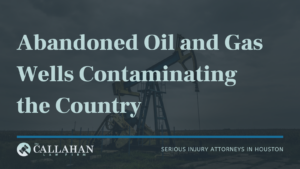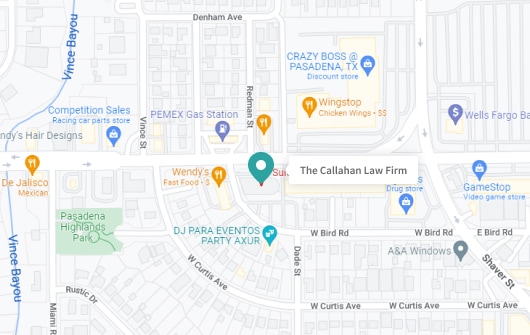Abandoned Oil and Gas Wells Contaminating the Country

Climate change has been a major issue for years, with experts and civilians alike working to fight it. But in recent years, a new aspect of our global environmental crisis has begun to unfold: abandoned oil sites. The Environmental Protection Agency reported that there are roughly 3.2 million abandoned oil and gas wells nationwide. It’s estimated that only a third of them have been plugged with cement, the recommended way to close a well site in order to prevent toxic chemical leaks. The majority of them, however, remain unplugged, posing as a major threat to neighboring residents and the land around them.
Why are Abandoned Oil and Gas Wells so Dangerous?
Because these wells have not been properly closed or maintained, many of them are releasing methane into the atmosphere, greatly accelerating global warming. Methane is a powerful greenhouse gas emitted during the extraction and production of oil. More than 80 times more potent than carbon dioxide, methane is a strong propellant for climate change, meaning the methane emission caused by these unattended oil wells a major environmental hazard.
In addition to releasing methane into air, some of these wells are also leaking other hazardous chemicals, such as benzene, into the surrounding land. Benzene, a clear, flammable liquid, is a component of crude oil, and is naturally occurring as well as manmade. Benzene is also a known carcinogen, meaning that exposure to it has definitively been linked to cancer diagnoses, so the infection of nearby fields and groundwater can be extremely harmful for the nearby public and their health.
Why Are There So Many Orphaned Well Sites?
Unfortunately, these abandoned oil sites can be difficult to even discover, let alone regulate. The first successful oil well was drilled in Pennsylvania in 1859, but plugging protocols would not be developed or regulated for another hundred years. Because many wells were drilled before plugging rules were implemented and adequate record-keeping was made standard, many of these orphaned sites lay hidden to this day.
Not only does the lack of records make these sites difficult to find, it also makes it hard for the current property owners to figure out which party is actually responsible for the messes the wells cause, leaving unsuspecting landowners to deal with the damage when things go awry. A ranch owner near Corpus Christi experienced this when an abandoned well blew out on her land in 2019. She discovered a slew of orphaned wells and a tangle of pipelines, with leaking pipes spewing toxic chemicals onto her land. The records of the well indicated that the land was drilled in the 1920s, but had no mention of who was responsible. After a years-long fight with the Texas Railroad Commission, she filed a lawsuit, which prompted the state to seal her wells.
Finding Abandoned Oil and Gas Wells
Some states have hired well hunters to find orphaned wells. However, because the wells lack regulation, they can vary in construction, making them extremely difficult to find. Well hunters use metal detectors to look for steel well casings that may indicate an abandoned well is underground. However, some of the older wells are harder to detect because they were cased in wood, not metal. In these cases, well hunters utilize drones with laser imaging technologies to look for any depressions or abnormalities in the ground.
Even if there is a mass shift to renewable energy sources in the near future, abandoned oil wells will remain a lingering issue. A study done by the Environmental Protection Agency found that unplugged wells leak 5,000 times more methane than plugged wells did, and these wells are estimated to leak at least 280,000 metric tons of methane into the air every year they go unplugged. In the meantime, the thousands of unplugged wells waiting to be discovered are doing irreparable damage to the surrounding communities.
The effects of these wells go further than they appear. Leaking wells can contaminate nearby crops and water supply, which affects the neighboring residents as well as their livestock. If the issue is not discovered in time, large supplies of toxic crops and livestock could unknowingly be sent out to the masses for purchase and consumption, furthering the reach of the problem and endangering even more people.
A National Issue
While the technological advancements used to discover these abandoned well sites is helping to solve the problem, experts fear that orphaned wells are cropping up faster than states can plug them. In June, the state of Texas recently reported 7,268 known abandoned wells, a 17% increase from 2019. Another 146,859 were labeled as “inactive,” meaning they were no longer producing oil, but not yet serious enough to be at the top of the list to be plugged.
This problem extends further than Texas, as well. Abandoned sites have been popping up across the country as more and more of them are being rediscovered. Hikers in New Mexico stumbled upon a bubbling well leaking oil onto the path beside them, and a school in Wyoming was forced to shut down for over a year after multiple complaints led to the discovery of dangerously high levels of benzene and CO₂ in the building’s air.
Heralded as silent killers, these abandoned wells can also be ticking time bombs for those around them, and unfortunately, some of these hazardous sites are not discovered until it’s too late. For example, in 2017, a Colorado basement exploded after an orphaned flow line leaked methane into a home, killing the homeowner and his brother-in-law.
Solving the Problem
The problem has only been exacerbated since the start of the coronavirus pandemic, with several producers declaring bankruptcy and abandoning oil fields once the demand for fuel began dipping. The current administration addressed this crisis in its recently proposed infrastructure deal. In the original proposal, $16 billion was allocated towards hiring people to locate and plug abandoned oil and gas well sites. However, the infrastructure deal has since been amended and the amount allocated towards well-plugging has been greatly reduced.
With an average of $76,000 needed to plug each well, experts believe it would cost $160 billion dollars to adequately plug all of the abandoned oil and gas wells and restore the land around them. Whether the responsibility to foot that bill falls on the government, the companies that abandoned the sites, or the community has been widely debated. Regardless, it is clear that this is a nationwide crisis that must soon be addressed. To continue to ignore it is to leave communities across the country in danger.
—
If you or your property has suffered damages due to a chemical leak, contamination, or other form of environmental negligence, we may be able to help. Give our Environmental Claims Lawyers a call at 713-224-9000 today to request a free consultation, or fill out our contact form here.

Michael S Callahan is an attorney and founder of The Callahan Law Firm. He focuses his practice on representing individuals and families in personal injury cases involving motor vehicle and truck accidents, workplace accidents and defective products. With over 25 years of experience, he is dedicated to fighting on behalf of people whose lives have been forever altered by the negligence and carelessness of corporations and individuals. Originally trained as a mechanical engineer, Michael has been practicing law and fighting for justice for those who need it most since 1994. He is board-certified in Personal Injury Trial Law by the Texas Board of Legal Specialization and a member of various esteemed legal associations. Outside of work, Michael enjoys spending quality time with his family, outdoor activities, and continually striving to improve as a trial lawyer and human being.











